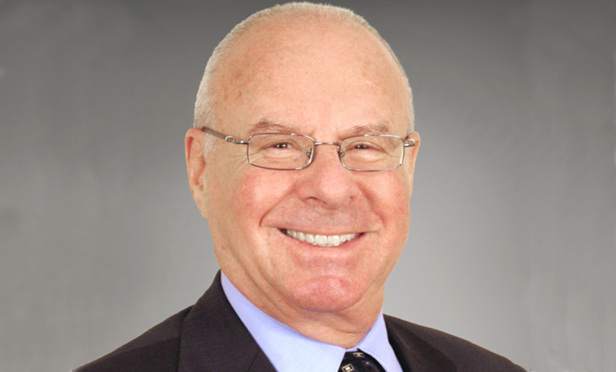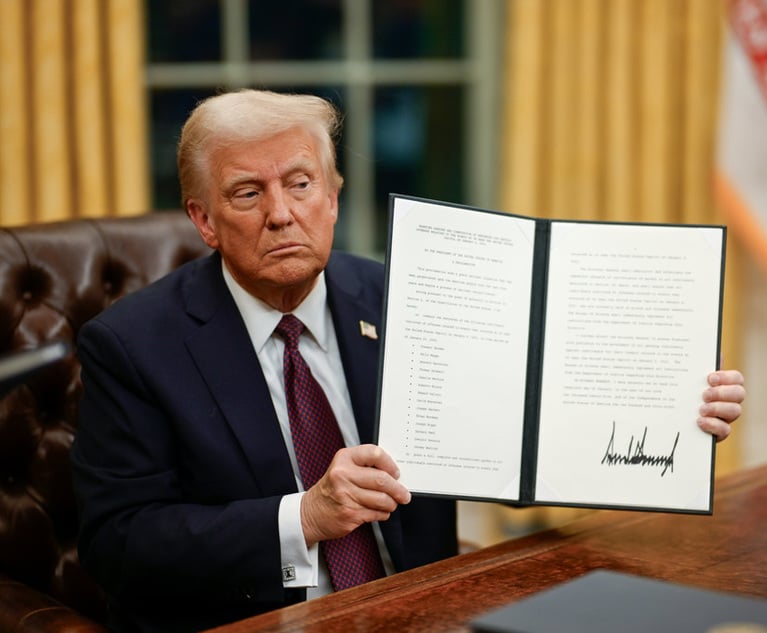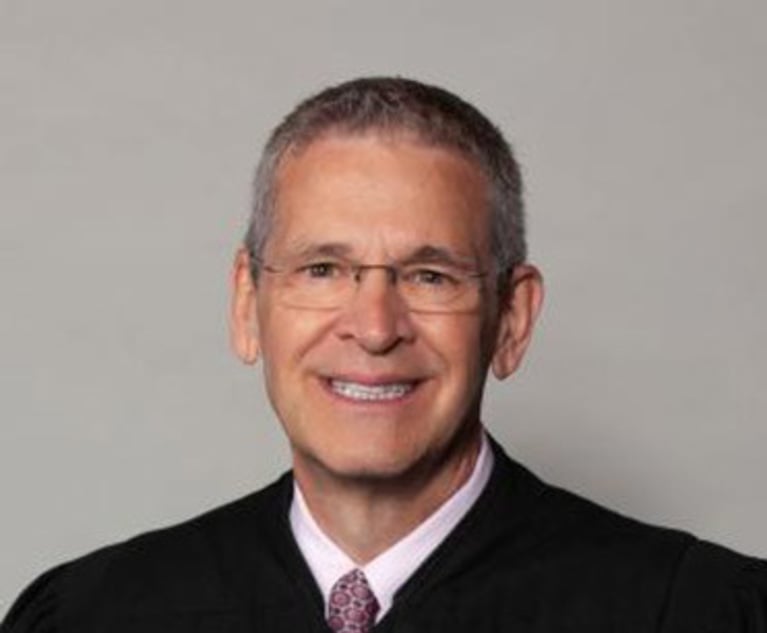SEC Issues Concept Release on Harmonization of Securities-Offering Exemptions
In his Real Estate Securities column, Peter Fass discusses a concept release issued by the SEC on June 18 which seeks feedback "on possible ways to simplify, harmonize, and improve the exempt offering framework" of the The Securities Act of 1933.
October 16, 2019 at 12:30 PM
9 minute read
 Peter M. Fass
Peter M. Fass
The Securities Act of 1933 (1933 Act) requires that all securities offerings in the United States be registered with the U.S. Securities and Exchange Commission (SEC) unless an exemption is available. On June 18, 2019, the SEC issued a concept release (Release) to solicit feedback "on possible ways to simplify, harmonize, and improve the exempt offering framework to promote capital formation and expand investment opportunities while maintaining appropriate investor protections." The Release does not propose specific rule changes, rather is seeks feedback.
Current Exemption Framework
The exemptions from 1933 Act registration requirements are in Section 3 of the 1933 Act, which generally exempts certain classes of securities, and Section 4 of the 1933 Act, which exempts certain types of securities offerings. SEC rules provide safe-harbor standards for certain exemptions and understandings of the exemptions are informed by interpretations from the courts and the SEC. In addition, the scope of exempt offerings has evolved through legislative changes and SEC rulemaking and guidance. The Release solicits feedback primarily on 1933 Act exempt offerings.
The principal offering exemptions used by a real estate sponsor include:
- Section 4(a)(2) exempts "transactions by an issuer not involving any public offering"
- Regulation D exempts certain small offerings pursuant to Section 3(b) and provides a nonexclusive safe harbor under Section 4(a)(2) and an exemption that allows general solicitations if certain conditions are complied with
- Regulation A, which permits offers and sales of up to $20 million (Regulation A Tier 1) or $50 million (Regulation A Tier 2) of securities over a 12-month period, provided that certain conditions, including filing requirements, are met:
- Rule 504 exempts offers and sales of up to $5 million of securities in a 12-month period.
- Rule 506(b) permits sales of securities to an unlimited number of accredited investors and up to 35 unaccredited investors who, alone or with a representative, meet certain knowledge and experience requirements, provided that certain conditions are met, such as no general solicitation or advertising is used to market the securities and the requirement to provide buyers specified disclosure if any unaccredited investors are included in the offering.
- Rule 506(c) permits sales of an unlimited amount of securities through general solicitation provided all purchasers are accredited investors, the issuer takes steps to verify the accredited investor status of the investor and certain other conditions are satisfied.
The conditions that offering exemptions follow are based on investor protection considerations, generally correlated with the sophistication of the potential investors. Conditions include limits on the size or amount of the offering, the manner in which the offering can be conducted, eligible investors (such as qualified institutional buyers and accredited investors), disclosure or filing requirements, resale restrictions and types of issuers.
Investors who want to resell securities acquired from an issuer in a registered offering or an exempt offering must either register the resale under the 1933Act or rely on an exemption. Resale exemptions are subject to conditions set out in 1933 Act, SEC rules, regulations and guidance and case law.
The SEC is also seeking feedback on the integration doctrine, which determines when concurrent or successive offerings are considered a part of the same offering for purposes of the 1933 Act registration and exemption analysis.
SEC Concept Release
The Release covers seven broad themes related to the exempt offering framework:
- Exempt Offering Framework—whether the SEC's exempt offering framework, as a whole, is consistent, accessible, and effective for both companies and investors or whether the SEC should consider changes to simplify, improve, or harmonize the exempt offering framework
- Capital Raising Exemptions Within the Framework—whether there should be any changes to improve, harmonize or streamline any of the capital raising exemptions, including the private placement exemption and Rule 506, Regulation A, and Rule 504.
- Potential Gaps in the Framework—whether there may be gaps in the SEC's framework that may make it difficult, especially for smaller companies, to rely on an exemption from registration to raise capital at key stages of their business cycle
- Investor Limitations—whether the limitations on who can invest in certain exempt offerings, or the amount they can invest, provide an appropriate level of investor protection (i.e., whether the current levels of investor protection are insufficient, appropriate or excessive) or pose an undue obstacle to capital formation or investor access to investment opportunities, including a discussion of the persons and companies that fall within the "accredited investor" definition
- Integration—whether the SEC can and should do more to allow companies to transition more easily from one exempt offering to another and, ultimately, to a registered public offering
- Secondary Trading—whether the SEC should revise its rules governing exemptions for resales of securities to facilitate capital formation and to promote investor protection by improving secondary market liquidity
The SEC is seeking public comment on the broad themes discussed above. The SEC identified 138 separate areas that it specifically asks for comment and many of the areas contain multiple sub-requests for information. For example, the SEC asks a series of questions about the overall exempt offering framework.
Areas where the SEC is seeking input include: (1) whether the existing framework provides appropriate options for different types of issuers to raise capital at key stages of their business cycles; (2) whether the existing framework or the exemptions themselves are too complex either because of the number of exemptions or because of the way they are structured; (3) whether offers should be deregulated; (4) how technology impacts decisions to rely on a specific exemption; and (5) whether more investors should be able to participate in exempt offerings.
Accredited investors. Currently, natural persons are accredited investors if their income exceeds $200,000 in each of the two most recent years (or $300,000 in joint income with the person's spouse) and they reasonably expect to reach the same income level in the current year, or their net worth exceeds $1,000,000 (individually or jointly with a spouse) excluding the value of their primary residence. In addition, directors, executive officers and general partners of the issuer are accredited investors. The SEC last reviewed the definition in 2015. Areas where the SEC is seeking input include whether: (1) the current definition should be retained; (2) the financial thresholds should be adjusted; (3) the definition of spouse should be expanded to include spousal equivalents; (4) and other measures of sophistication should be included that would allow a person to qualify as an accredited investor. In addition, the SEC is seeking comment on whether revisions should be made to other aspects of the definition of accredited investor, including whether: (1) other entities should be eligible to qualify as accredited investors in addition to those enumerated in the existing rule; (2) and the current $5,000,000 asset test should be replaced by an investments test.
Regulation D. Areas where the SEC is seeking input on Regulation D include whether: (1) Rules 506(b) and 506(c) should be combined into one exemption and, if so, what features of the existing rules should be retained; (2) it is important to allow non-accredited investors to be able to participate in a Rule 506(b) offering; (3) the information requirements of Regulation D should be aligned with those of other exempt offerings; (4) the SEC should define general advertising and general solicitation; (5) investment limits should be added for non-accredited investors; and (6) non-accredited investors should be allowed to participate in an offering that involves a general solicitation.
Integration. A concern of frequent issuers of privately-placed securities is whether multiple securities transactions should be integrated and considered part of the same offering. If multiple securities transactions are considered part of the same offering, the issue becomes whether an exemption from registration is still available for the integrated offerings as a whole. There is not a bright line test for determining whether offerings should be integrated. The determination requires an analysis of specific facts and circumstances. In Rule 502(a) under Regulation D, the SEC identified five factors to consider in determining whether offerings should be integrated. In addition, the SEC has created a number of safe harbors from integration, including with respect to Regulation A offerings, Regulation Crowdfunding offerings and intrastate offerings pursuant to Rule 147 or 147A, where the SEC has explicitly identified the types of offerings that would not be integrated with the offerings in question. In addition, Rule 152 provides that a transaction not involving a public offering will not be integrated with a subsequent public offering and Rule 155 provides when an abandoned offering will not be integrated with a subsequent offering. Areas where the SEC is seeking input on integration include whether: (1) one integration doctrine should apply to all exempt offerings; (2) the six-month period in the five-factor test of Rule 502(a) should be shortened; and (3) the SEC should adopt additional integration safe harbors.
Conclusion
The Release provides an opportunity for real estate sponsors to provide input on issues they have faced in this area either on a regular basis or under particular circumstances. It is the time for interested parties to become part of the conversation.
Further, the Release contains extensive discussion on the background of many of the exempt offering provisions and itself provides a resource that can be consulted on issues as they arise in the future.
Peter M. Fass is a partner at Proskauer Rose.
This content has been archived. It is available through our partners, LexisNexis® and Bloomberg Law.
To view this content, please continue to their sites.
Not a Lexis Subscriber?
Subscribe Now
Not a Bloomberg Law Subscriber?
Subscribe Now
NOT FOR REPRINT
© 2025 ALM Global, LLC, All Rights Reserved. Request academic re-use from www.copyright.com. All other uses, submit a request to [email protected]. For more information visit Asset & Logo Licensing.
You Might Like
View All


'You Became a Corrupt Politician': Judge Gives Prison Time to Former Sen. Robert Menendez for Corruption Conviction
5 minute readTrending Stories
Who Got The Work
J. Brugh Lower of Gibbons has entered an appearance for industrial equipment supplier Devco Corporation in a pending trademark infringement lawsuit. The suit, accusing the defendant of selling knock-off Graco products, was filed Dec. 18 in New Jersey District Court by Rivkin Radler on behalf of Graco Inc. and Graco Minnesota. The case, assigned to U.S. District Judge Zahid N. Quraishi, is 3:24-cv-11294, Graco Inc. et al v. Devco Corporation.
Who Got The Work
Rebecca Maller-Stein and Kent A. Yalowitz of Arnold & Porter Kaye Scholer have entered their appearances for Hanaco Venture Capital and its executives, Lior Prosor and David Frankel, in a pending securities lawsuit. The action, filed on Dec. 24 in New York Southern District Court by Zell, Aron & Co. on behalf of Goldeneye Advisors, accuses the defendants of negligently and fraudulently managing the plaintiff's $1 million investment. The case, assigned to U.S. District Judge Vernon S. Broderick, is 1:24-cv-09918, Goldeneye Advisors, LLC v. Hanaco Venture Capital, Ltd. et al.
Who Got The Work
Attorneys from A&O Shearman has stepped in as defense counsel for Toronto-Dominion Bank and other defendants in a pending securities class action. The suit, filed Dec. 11 in New York Southern District Court by Bleichmar Fonti & Auld, accuses the defendants of concealing the bank's 'pervasive' deficiencies in regards to its compliance with the Bank Secrecy Act and the quality of its anti-money laundering controls. The case, assigned to U.S. District Judge Arun Subramanian, is 1:24-cv-09445, Gonzalez v. The Toronto-Dominion Bank et al.
Who Got The Work
Crown Castle International, a Pennsylvania company providing shared communications infrastructure, has turned to Luke D. Wolf of Gordon Rees Scully Mansukhani to fend off a pending breach-of-contract lawsuit. The court action, filed Nov. 25 in Michigan Eastern District Court by Hooper Hathaway PC on behalf of The Town Residences LLC, accuses Crown Castle of failing to transfer approximately $30,000 in utility payments from T-Mobile in breach of a roof-top lease and assignment agreement. The case, assigned to U.S. District Judge Susan K. Declercq, is 2:24-cv-13131, The Town Residences LLC v. T-Mobile US, Inc. et al.
Who Got The Work
Wilfred P. Coronato and Daniel M. Schwartz of McCarter & English have stepped in as defense counsel to Electrolux Home Products Inc. in a pending product liability lawsuit. The court action, filed Nov. 26 in New York Eastern District Court by Poulos Lopiccolo PC and Nagel Rice LLP on behalf of David Stern, alleges that the defendant's refrigerators’ drawers and shelving repeatedly break and fall apart within months after purchase. The case, assigned to U.S. District Judge Joan M. Azrack, is 2:24-cv-08204, Stern v. Electrolux Home Products, Inc.
Featured Firms
Law Offices of Gary Martin Hays & Associates, P.C.
(470) 294-1674
Law Offices of Mark E. Salomone
(857) 444-6468
Smith & Hassler
(713) 739-1250







